Rehab - Speech Language Pathology
1/109
There's no tags or description
Looks like no tags are added yet.
Name | Mastery | Learn | Test | Matching | Spaced |
|---|
No study sessions yet.
110 Terms
What disorders do SLPs Treat?
articulation disorders
voice disorders
swallowing disorders
language disorders
fluency disorders
cognitive communication impairment
Where do SLPs work?
•Schools
•Hospitals
•Nursing homes
•Private practice
•Academia/research
•Children’s treatment centres
•Patient/client homes (CCAC - community care access centre)
•Centres for the developmentally disabled
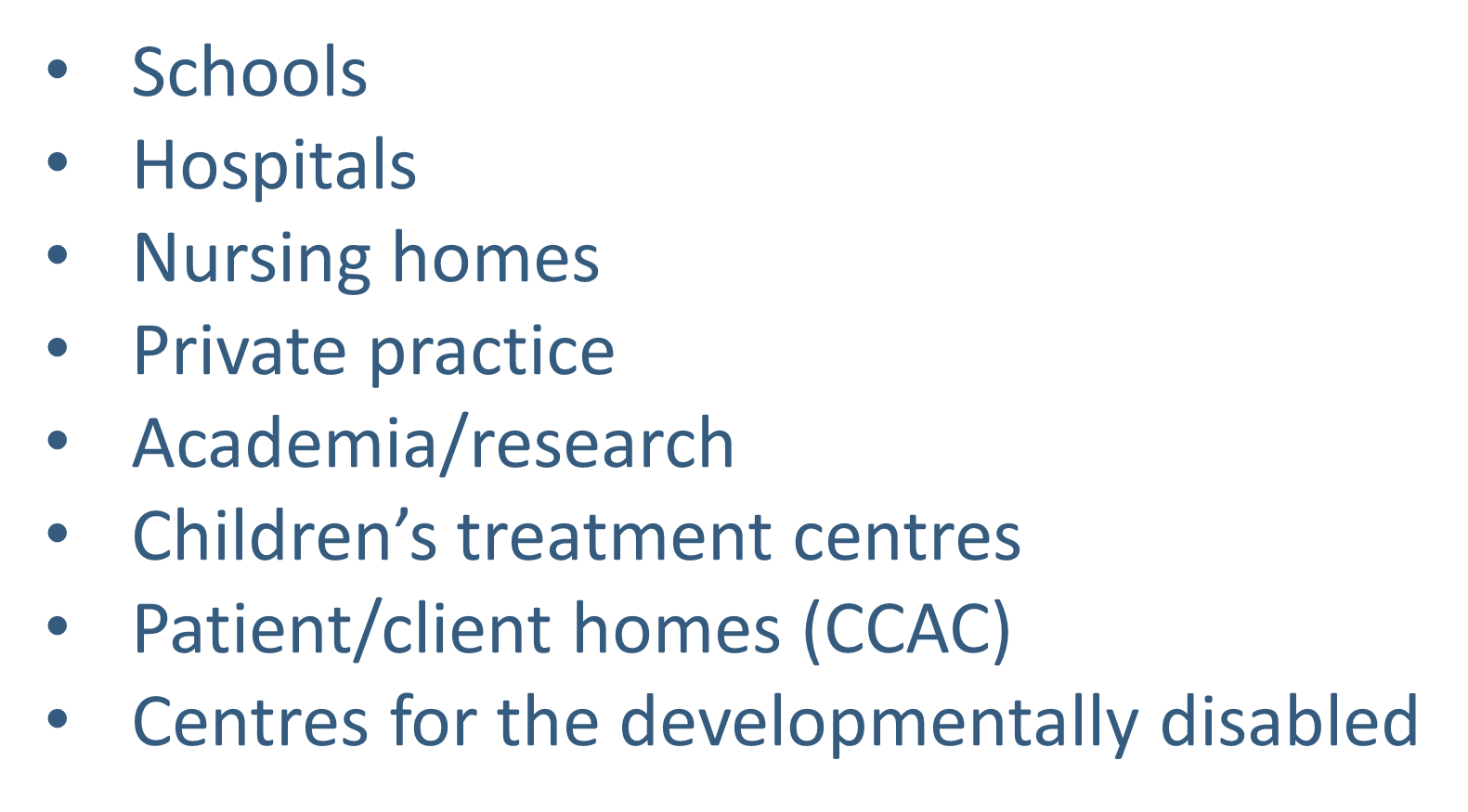
what are the steps/stages of the Clinical service specturm
1. Prevention (primary/secondary)
2. Assessment/identification
3. Treatment/management
4. Consultation
5. Discharge planning
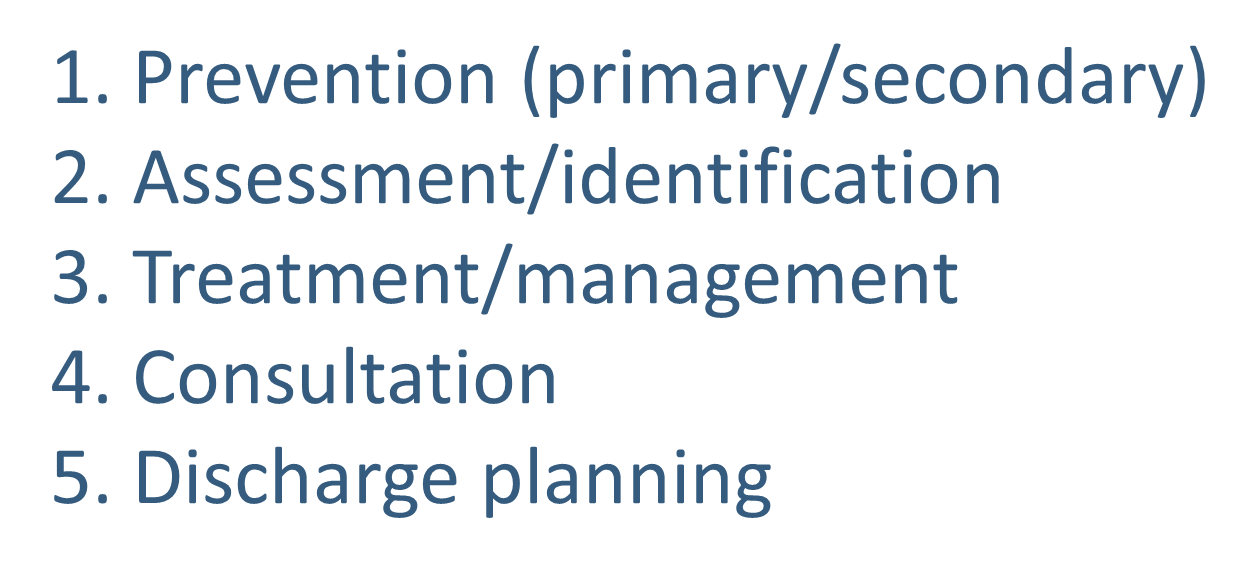
The clinical service spectrum - primary prevention
purpose
target
objectives
purpose
elimination/inhibition of onset of development of disorder
target
broader population
Objectives
increase awareness
reduce incidence
prevention of disease
List 3 examples of primary prevention on the clinical spectrum
parent education
educating parents on the importance of talking, reading and singing ot thier children from birth to support early language skills
community outreach
screenings
The clinical service spectrum - secondary prevention
purpose
target
objectives
purpose
early detection of disorders
target
high risk groups
objectives
early detection/treatment
minimize severity/effects
examples of secondary prevention
early screening and diagnosis
speech therapy for at risk populations
intervention for mild disorders
targert support for individuals with specific needs
parent and caregiver education for early intervention
The clinical service spectrum - assessment/identification
what is the scope of practice?
diagnosis
compariosn to normal population
strength/weakness identification
prognosis
treatment
are SLPs able to diagnose underlying conditions?
no but they can diagnose communicative difficulties
Simultaneous treatment and example
addressing multiple speech or language goals at the same time within therapy sessions
ex. a child with both speech sound disorder and lanugae deley may work on both goals simultaneously during the same treatment session
Sequential treatment
focusing on addressing one goal or issue at a time before moving onto the next
ex a child with both speech sound disorder and fluency disorder may first focus on improving speech clairty and then later move on to fluency once the speech sound issues are resolved
individual therapy
focusing on one on one sessions between the SLP and the client, addressing the clients specfic needs and goals
Group therapy
inolves a small group of individuals working otgther with a SLP on common goals
provides opportunities for peer interaction
The clinical service spectrum - Consultation
Providing expert advice, guidance and support to individuals, educators, caregivers or other professionals regarding speech, language or communication challenges
The clinical service spectrum - Consultation
what are the four pillars? of consultation
collaborative support
providing expertise
developing strategies
advocacy
The clinical service spectrum - discharge planning
preparing and transition a patient from therapy to independent functioning or to other appropriate care, ensuring continued progress after therapy ends
•Ensures a smooth transition from therapy to daily life, supporting the maintenance of skills.
•Reduces the likelihood of relapse or regression in communication abilities.
•Enhances patient satisfaction and empowers caregivers to take an active role in continued care

what are the different refulatory colleges/organizations for SLPS
speech language audiology canada (SAC)
college of audiologists and speech language pathologists of ontario ( CALSPO)
What are the 4 systems/structures that make speech work?
Respiratory system - in/exhalation muscles involved in air flow
laryngeal system: -phonation( production of voice, larynx ( voice box)
resonating chamber : moth chamber, oral and nasal cavity
articulatory system: movement of articulators
features of breathing for life/vegative breathing
50% inhalation and 50% exhalation
typically via nose
largely passive
exhalation relies on gravitational forces
Features of breathing for speech
allows for larger volume of air at a more rapid rate
10% inhalation and 90% exhalation
typically via mouth
finely graded exhalation thanks to accessory musculature
breath group
sequence of words or syllables produced on a single expiration
in normal speech we typically speak for no more than 10 seconds per breath which maximally translates to about 20 - 30 syllables \
in conversational speech we replenish our air supply more often
Dysarthria
muscle weakness and abnormal reflexes
Functions of the laryngeal system
Regulation of air entry to and exit from lungs during breathing
protection of lungs during swallowing
allows bearing down and maintance of air pressure in thoracic cavity
what is resonance
the unique quality of sound that a phenome possesses based on its unique vocal tract shape and accompanying vibratory pattern
resonance varies according to what features?
size of articulatory chamber
size of nasal cavity
amount and density of tissues
draw and label a diagram if the mouth/nose/throat with articulators
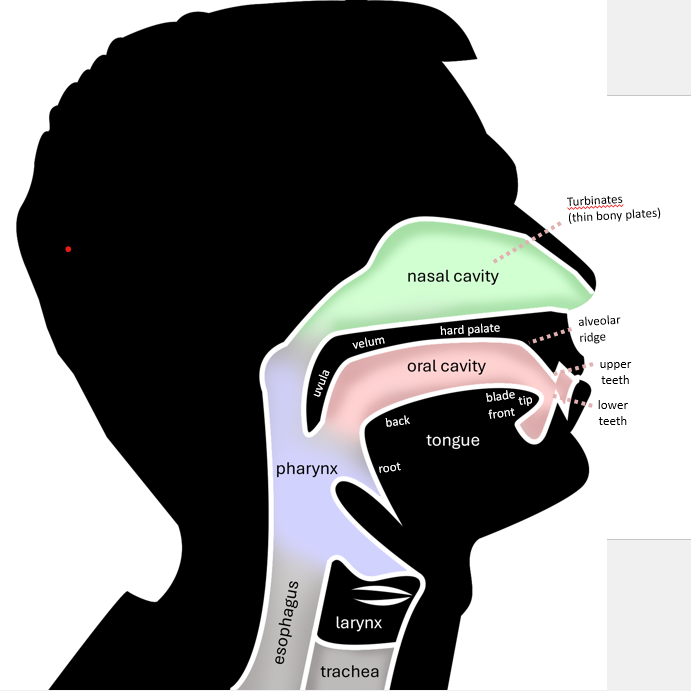
Articulators: Lips
greek/latin term
adjective
greek latin term: labia
adjective: labial
Articulators: teeth
greek/latin term
adjective
greek latin term:
adjective: dental
Articulators: alveolar ridge
greek/latin term
adjective
greek latin term:
adjective: alveolar
Articulators: hard palate
greek/latin term
adjective
greek latin term:
adjective: palatal
Articulators: soft palate
greek/latin term
adjective
greek latin term: velum
adjective: velar
Articulators: tongue tip
greek/latin term
adjective
greek latin term: apex
adjective: apical
Articulators: tongue blade
greek/latin term
adjective
greek latin term: lamina
adjective: laminal
Articulators: tongue body
greek/latin term
adjective
greek latin term: dorsum
adjective: dorsal
Articulators: tongue root
greek/latin term
adjective
greek latin term:
adjective: radical
Articulators: uvula
greek/latin term
adjective
greek latin term:
adjective: uvular
Articulators: upper throat
greek/latin term
adjective
greek latin term: pharynx
adjective: pharyngeal
Articulators: vociebox
greek/latin term
adjective
greek latin term: larynx
adjective: laryngeal
where is the primary auditory cortex located ?
temporal lobe
what is the function of the primary auditory cortex
processes sound and is essential for understanding spoken language
involved in decoding auditory information
what is the damage impact of the primary auditory cortex
can lead to difficulty processing speech sounds
impacts ability to comprehend spoken language
Where is wenicke’s area located?
Left hemisphere, frontal love
what is the function of wernickes area?
language comprehension
allows for the understanding of spoken and written language
What is the damage impact for wernicke’s area?
leads to wernicke’s aphasia
being fluent but having meaningless specch with impared understanding
may produce speech normal grammar and syntax but the content lacks meaning
where is brocas area located?
left hemisphere in the frontal lobe
what is the function of brocas area
speech production
language expression
helps in forming grammatically correct sentences and controlling the muscles needed for speech ex mouth, tongue and vocal cords
what is the damage impact of broca’s area
leads to brocas aphasia
difficulty speaking but comprehension remains relatively intact
speech is often slow and effortful
where is the Motor cortex located
Frontal lobe
what is the function of the motor cortex
controls voluntary movements - including movements involved in speech production
sends signals to the muscles used in speaking ex in mouth, face and vocal cords
What is the damage impact
difficulty producing speech or controlling the muscles necessary for speech
what are the 12 cranial nerves and location?
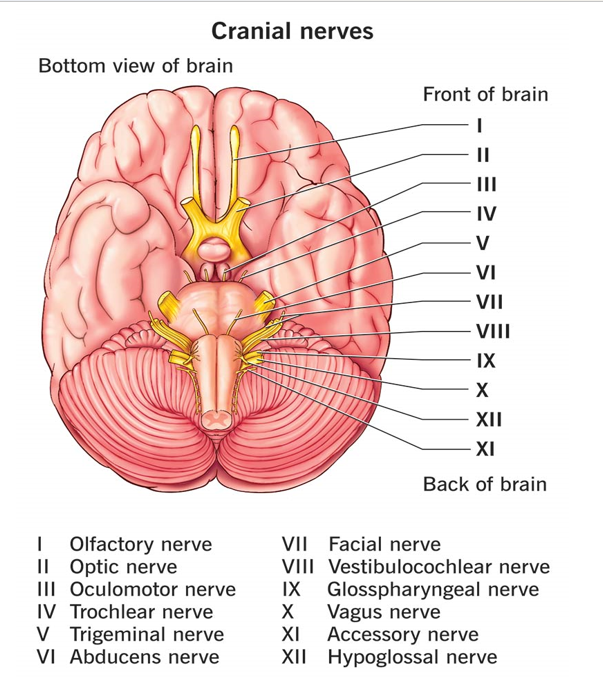
dysphagia
difficulty swallowing
swallowing disorders
Barium Swallow Assessment / videofluroscopy
mix food or drink with barium and give to patent
helps see if theres choking or aspiration
What is an SLPs role in swallowing management?
create personalized therapy plans - to improve swallowing by strenghtening muscles, ehnacing coordination and addressing impairments
use techniques such as posture adjustments and swallowing maneuvers to ensure safe and efficient eating
work with nutritionists to reccomend safe food textures and liquid consistencies to reduce choking risk and teach safe swallowing strategies
educate individuals and caregivers on managing dysphagia at home
What 3 categroies do speech disorders fall into?
articulation
phonological
motor
what is speech ?
neuromuscular process of producing sounds for transmitting verbal messages
how many speech sounds are used in english
44
vowels
sounds produced without any constriction or blockage of airflow within the vocal tract
consonants
sounds in which air flow is completely blocked, greatly restricted or orally blocked and diverted through nose
intelligability/power/loudness: vowels vs consonants
vowels:
have the power
consonants:
carry main information
articulatory movement: vowels vs consonants
vowels:
more open
consonants:
more restricted
sound source generation: vowels vs consonants
vowels:
voiced by default
consonants:
voiced or voiceless
length/duration: vowels vs consonants
vowels:
vowels longer (can vary)
consonants:
brief and fleeting
frequency specifications: vowels vs consonants
vowels:
most info up to 2000 Hz
consonants:
info up to 8000Hz
size of resonating chamber : vowels vs consonants
vowels:
within oral cavity
consonants:
reduce size of oral cavity
stand alone capabilties : vowels vs consonants
vowels:
can stand alon ex I
consonants:
cannot stand alone
Syllable structure : vowels vs consonants
vowels:
are nucleus
consonants:
onset or coda of syllable
classification: vowels vs consonants
vowels:
tongue height, tongue front -back, tense/lax, lip rounding/spreading
consonants:
manner, place and voicing
Articulation
motor processes involved in the planning and execution of speech, acquisition and production of specific sounds, movement of articulators
articulation disorder
Problems with motor production aspects of speech, or an inability to produce certain speech sounds
what is the basic unit of articulation
the speech sound
articulation errors are called?
Phonetic errors
Phonology
the function and organization of phonemes within a given language system
the study of the linguistic rules of speech sound system of language, rules for combination of speech sounds
what is the basic unit of phonology
phenome
phonological disroder
problems with the language specific function of phonemes
phonology errors are called ?
phonemic errors
how are speech disorders classified?
developmental (chiildren)
articulation
phonological
Dysarthria (children and adults)
apraxia (chidlren and adults)
Speech disdorders presentation in children vs adults
children
structural abnormalities
faulty learning
hearing loss
unknown cause
Adults
residual childhood errors
PNS damage
structural change
CNS damage
Are phonological errors a normal part of language development?
yes, as children learn to speak, they may make mistake in pronunciation but these usually lessen as they continue to develop their speech skills
Phonological processes - Assimilation
sound changes where 1 sound or syllable influences another sound or syllable
ex velar assimilation, nasal assimilation, prevocalic voicing, postvocalic devoicing
approx age of elimation 3 yrs
ex gog for dog, nunny for bunny , beach for peach
Phonological processes - reduplication
repetition of a complete or inccomplete syllable in substitution for a word
ex bottle pronounced as baba or water as wawa
outgrown by age 3
Phonological processes - denasalization
the substitution of nasal consonant ( ‘n’ or ‘m’) with a non nasal consonant ( b’ or d’)
ex nose pronouced as doze
typically eliminated by 2.5 years
Phonological processes - substitution gliding
the substition of a liquid sound ( ‘l’ or ‘r’r) with a glide sound ( ‘w’ or ‘y’)
ex rail pronounced as wail, play pronouced as pway
usually outgrown by age 5
Phonological processes - substitution vowelization
the substitution of a vowel sound for ‘l’ or ‘er’ sounds
ex apple pronounced as appoh or river pronouced as rivuh
age of elimination varies from child to child
Phonological processes - substitution backing
substitution of a sound produced in the front of the mouth (‘t’ ot ‘n’) with a sound produced in the back ( k’k or ‘g’)
ex duck pronouced as kuck or dog pronouced as gog
this is atypical - typically only occurs in chidlren with more severe phonological delays
Phonological processes - substitution fronting
the term used when sounds that should be made in the back of the mouth (velar) are replaced with a sound made in the front of the mouth ( alveolar)
ex cookie pronounced as tootie or gate pronouced as date
usually eliminated by ages 3 -4
Phonological processes - substitution stopping
The substitution of a stop sound ('b', 'p', 't', 'k', 'g') for a fricative sound ('f', 'v', 's', 'z', 'h', 'th', 'sh', and 'ch')

ex wish pronuced as wit or puzzle pronounced as puddle
depending on the fricative sound this process is eliminated between the ages of 3 - 6 years
phonological proccess - syllable structure are?
sound chnages that cause sounds or syllables to reduced in number, deleted or repeated
phonological processes - syllable structure - cluster reduction
reduction of a consonant cluster ( two consonants next to one another) to one consonant
ex tree pronouced as tee or stay pronouced as say
usually outgrown by 4 years old except for words starting with s
consonant clusters ( consonants blends)
S blends: st, sm, sn, sw, sl,sp, sc, sk
L blends: pl, bl, gl, cl, sl, fl
R blends: pr, br, cr, gr, tr, dr, fr
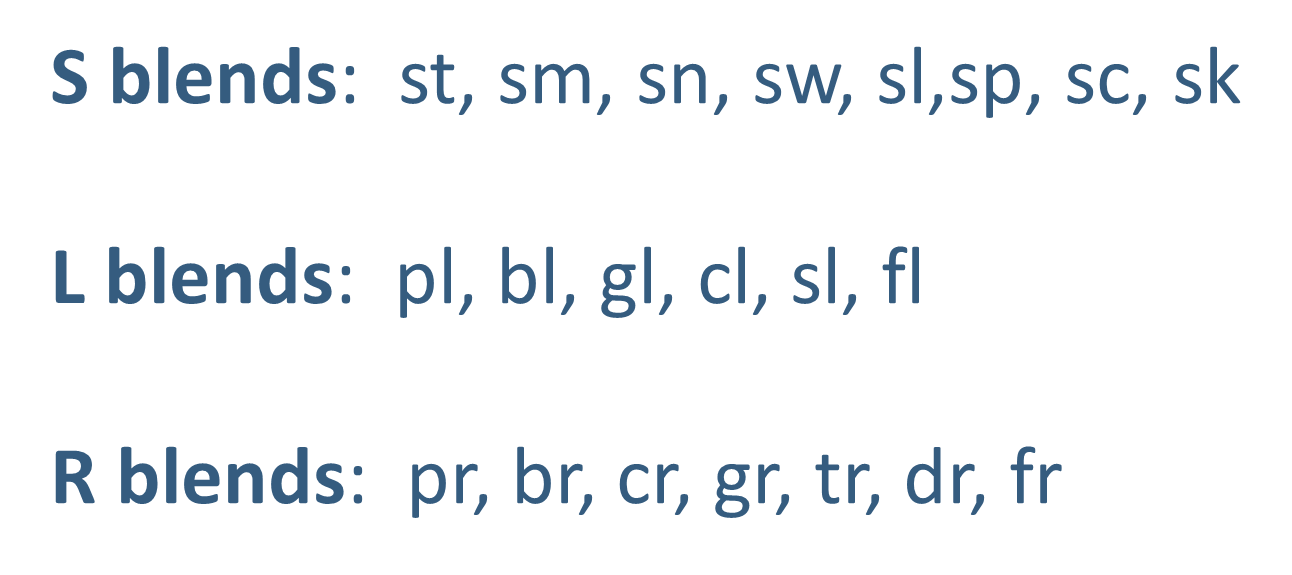
phonological processes - syllable structure - final consonant deletion ( FCD)
elimination of the final consonant in a word
ex road pronounced as roh or cat pronouced as ca
usually eliminated by age 3
phonological processes - syllable structure - initial consonant deletion
elimination of beginning consonant of a word
ex belly pronouced as elly
atypical - typically experienced by children with more severe phonological delays
phonological processes - syllable structure - syllable reduction
elimination of a syllable from a word that contains two or more syllables
computer pronocued as puter or vanilla pronouced as nilla
unstressed syllabke is usually the oen children eliminate
typically resolves between age 4 and 5
dysarthria and apraxia are examples of what type of speech disorder?
Motor speech disorders
What is dysarthria in children
characteristics:
Speech difficulties due to motor control issues from neurological impairments (e.g., cerebral palsy).
speech difficulties due to muscle weakness
no structural abnormalities
characteristics: Slurred, slow speech with inconsistent patterns. Affects articulation, breathing, and pitch. Speech difficulties improve with development. Treatment focuses on muscle control and clarity.


What is dysarthria in adults?
speech difficulties due to muscle weakness
no structural abnormalities
speech problems caused by conditions like stroke or parkinsons disease
Characteristics:
Speech is often monotone, slurred, or weak. More stable once the condition is diagnosed.
treatment focuses on improving communication and managing symptoms

Apraxia in children
have difficulty planning an coordinating the movements needed for speech
no muscle weakness or paralysis
characteristics: Inconsistent errors in speech sounds.
Difficulty with longer words and complex sentences. Speech may be slow, with gaps between words or syllables
treatment focuses on improving speech planning and motor coordination through targeted therapy
apraxia in adults
caused by brain damage, often stroke or brain injury, affecting the ability to plan and produce speech movements
no muscle weakness or paralysis
characteristics : Difficulty pronouncing words correctly, especially with longer or unfamiliar words. Speech is often slow, effortful, and may include inconsistent errors. Groping or struggle with articulating sounds. May affect fluency and prosody (rhythm of speech).
treatment focuses on relearning speech patterns and improving articulation through specch therapy

screening vs assessment
screening
consists of activities that identify individuals who may need further evaluation
Assessment
clinical evaluation of a client’s disorder